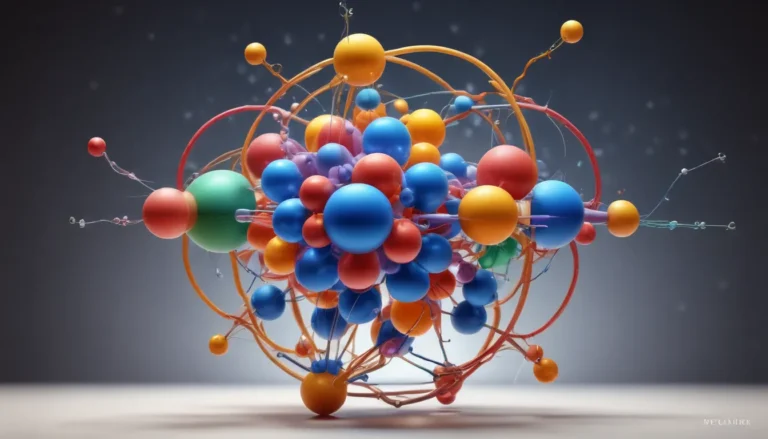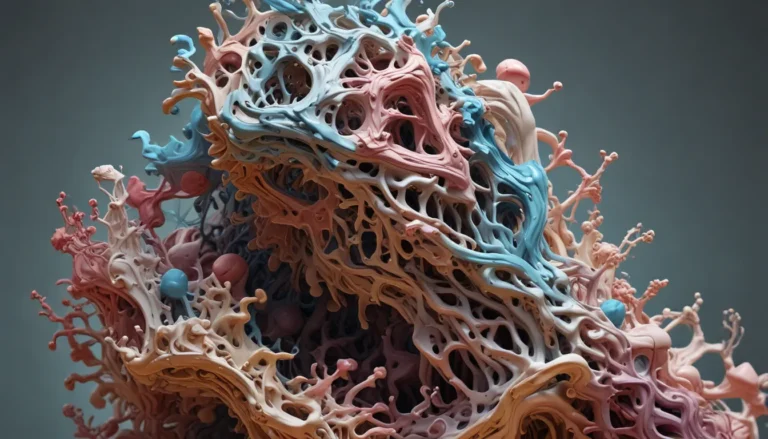A Note About Images: The images used in our articles are for illustration purposes only and may not exactly match the content. They are meant to engage readers, but the text should be relied upon for accurate information.
Sublimation is a captivating chemical process that has puzzled scientists and sparked curiosity for centuries. From its application in everyday life to its role in creating mesmerizing natural phenomena, sublimation is a phenomenon worth exploring. Join us as we unravel 20 astounding facts about sublimation that will leave you in awe and yearning for more knowledge.
The Enigmatic Process of Sublimation
Sublimation is the fascinating process where a solid substance transitions directly into a gas without passing through the liquid phase. It’s like witnessing magic in the realm of chemistry! This phenomenon is not just limited to science but extends its influence into various fields such as meteorology, physics, and even psychology.
Understanding the Essence of Sublimation
Sublimation occurs when a substance transforms directly from a solid state to a gas state without the need for an intermediate liquid phase. This unique process bypasses the conventional route of solid-liquid-gas transformation, offering a direct transition from solid to gas.
A Glimpse into Examples of Sublimation
- Dry ice: A common example of sublimation, where solid carbon dioxide transitions into carbon dioxide gas at temperatures below -78.5°C (-109.3°F).
- Iodine: When heated, solid iodine crystals sublimate into a purple vapor without undergoing the liquid phase.
Applications and Utility of Sublimation
- Purification: Sublimation can be utilized for purifying substances by leaving impurities behind, resulting in a purer form of the substance.
- Preservation: The process of freeze-drying food involves sublimation, where the water content sublimates, preserving food without losing its nutrients.
- Printing: Sublimation is essential in 3D printing and the production of inkjet dyes and toners, allowing for vibrant and durable prints.
- Forensic Science: Sublimation plays a crucial role in identifying trace substances at crime scenes and analyzing volatile components in illicit drugs.
Real-Life Applications of Sublimation
- Napthalene balls in mothballs undergo sublimation: This process releases a gas that repels pests, ensuring their longevity.
- Cloud Formation: Sublimation contributes to cloud formation as water vapor condenses directly into ice crystals.
- Perfume Production: Fragrance ingredients obtained through sublimation capture and preserve unique scents, enhancing perfume production.
The Marvels and Wonders of Sublimation
Sublimation unveils a realm of possibilities across various industries and disciplines. Whether it’s the creation of vibrant prints on fabrics, the purification of substances, or the preservation of delicate materials, sublimation offers a world of innovative solutions.
Understanding the Significance of Sublimation in Meteorology
Sublimation plays a crucial role in meteorology by explaining the formation of frost, dew, and other atmospheric phenomena. It enhances our comprehension of weather patterns and atmospheric processes.
Unlocking Secrets of Sublimation in Special Effects
- Theatrical Productions: The sublimation of dry ice is utilized in special effects to create a theatrical fog effect by rapidly sublimating carbon dioxide gas onto hot surfaces.
Exploring the Intricacies of Sublimation in Dye-Sublimation Printers
- High-Quality Prints: Dye-sublimation printers transfer colored dyes onto various materials using the sublimation process, resulting in vibrant and high-quality prints.
The Role of Sublimation in Thermodynamics
- Phase Transitions and Behavior: Sublimation is a fundamental concept in thermodynamics, aiding in studying phase transitions and substance behavior under varying temperature and pressure conditions.
Conclusion: Embracing the Astonishing World of Sublimation
In conclusion, sublimation is a captivating process with diverse practical applications in science, technology, and everyday life. From its mystical transformation of solid substances to gases to its pivotal role in creating captivating natural phenomena, sublimation continues to intrigue researchers and enthusiasts alike.
FAQs: Unveiling the Mysteries of Sublimation
- What is sublimation?
-
Sublimation is the process where a substance transitions from a solid to a gas without passing through the liquid state, driven by exceeding vapor pressure.
-
How does sublimation occur?
-
Sublimation happens when energy is added to a solid, enabling its particles to break free and transition directly into the gas phase.
-
Examples of sublimation:
-
Dry ice, mothballs, and frost formation are common examples of the sublimation process.
-
Applications of sublimation in daily life:
-
Sublimation finds practical use in freeze-drying, printing, purification, and various other areas.
-
Can all substances undergo sublimation?
- Sublimation depends on specific substance properties, and not all substances can undergo this unique transformation.
Sublimation is a mesmerizing process that unfolds endless possibilities and applications across numerous fields. Let the enigmatic nature of sublimation inspire your curiosity and drive your exploration of the wonders of science and technology.
By embracing the marvels of sublimation, we embark on an exhilarating journey through the realms of science and innovation. Let the captivating process of sublimation spark your imagination and deepen your understanding of the intricate world of matter and energy. Join us in unlocking the mysteries of sublimation and delving into its awe-inspiring applications.





